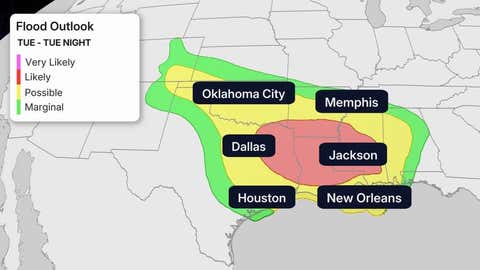Understanding the Omega Block: How the Omega Weather Pattern Impacts Our Climate
The omega weather pattern, also known as an omega block, is making headlines this week as it causes widespread storms and prolonged rain across the United States. Named for its resemblance to the Greek letter omega (Ω) when viewed on weather maps, this atmospheric phenomenon is a key driver behind recent severe weather and flooding events. This article explores how omega blocks form, why they matter, and what their impacts mean for communities.

What is an Omega Block?
An omega block is a unique large-scale weather pattern where the jet stream forms a shape similar to the Greek letter omega. This structure effectively "blocks" the typical west-to-east movement of weather systems. Instead of moving along, weather patterns get trapped under the omega, leading to persistent weather in certain regions. As a result, communities may experience several days of the same conditions—be it rain, sun, or storms.
According to weather.com, omega blocks can bring significant impacts because they force the jet stream to divert around the blocked region. This blocking effect can leave millions dealing with relentless rainfall and the risk of flooding.
Why Do Omega Blocks Cause Prolonged Storms and Floods?
The stationary nature of an omega block leads to weather systems lingering over the same area. Rounds of showers, thunderstorms, and even flash flooding can occur. The South and Northeast, for example, have recently faced ongoing storm threats due to an enduring omega block. Localized severe thunderstorm risks—including damaging winds and hail—were heightened as storms repeatedly hit central and West Texas, among other locations.
A detailed outlook from FOX Weather highlights how this weather pattern has fueled repeated rounds of rain and an increased flash flood threat in areas like New York City and Connecticut. Meteorologists explain that the cut-off low pressure in an omega block means systems move slowly, leading to more moisture and steady rain.
Real-Life Impacts of the Omega Weather Pattern
Communities impacted by an omega block face numerous weather challenges:
- Flash Flooding: Persistent rain increases soil saturation, raising the flash flood risk—especially in urban regions.
- Damaging Storms: Areas under the blocking pattern are more likely to experience strong thunderstorms, hail, and wind damage.
- Forecast Challenges: Predicting the exact movement and rainfall distribution becomes tricky because the stalled systems don't shift quickly.
- Extended Warmth or Rain: Some regions may see steady warmth, while others endure prolonged wet periods.
Both The Weather Channel and FOX Weather urge residents in affected areas to remain vigilant for updated warnings and be prepared for changing conditions.
How to Prepare for Omega Block Events
An omega block weather pattern can affect daily routines, travel, and safety. Here are a few tips to stay safe:
- Monitor Local Alerts: Follow trusted sources for the latest flood and severe weather updates.
- Have an Emergency Plan: Know evacuation routes and have supplies ready, especially in flood-prone areas.
- Protect Your Property: Clear gutters, secure loose items, and use sandbags if necessary.
- Stay Informed: Weather patterns can evolve, so check forecasts frequently from reputable sites.
Conclusion: Staying Ahead of the Omega Pattern
Omega blocks are a powerful force in meteorology. Their ability to stall weather systems can lead to significant, long-lasting impacts. Understanding this pattern helps communities and individuals better prepare for storms, floods, and extended weather events. Stay aware, stay prepared, and follow the experts for real-time weather updates to keep you and your loved ones safe.